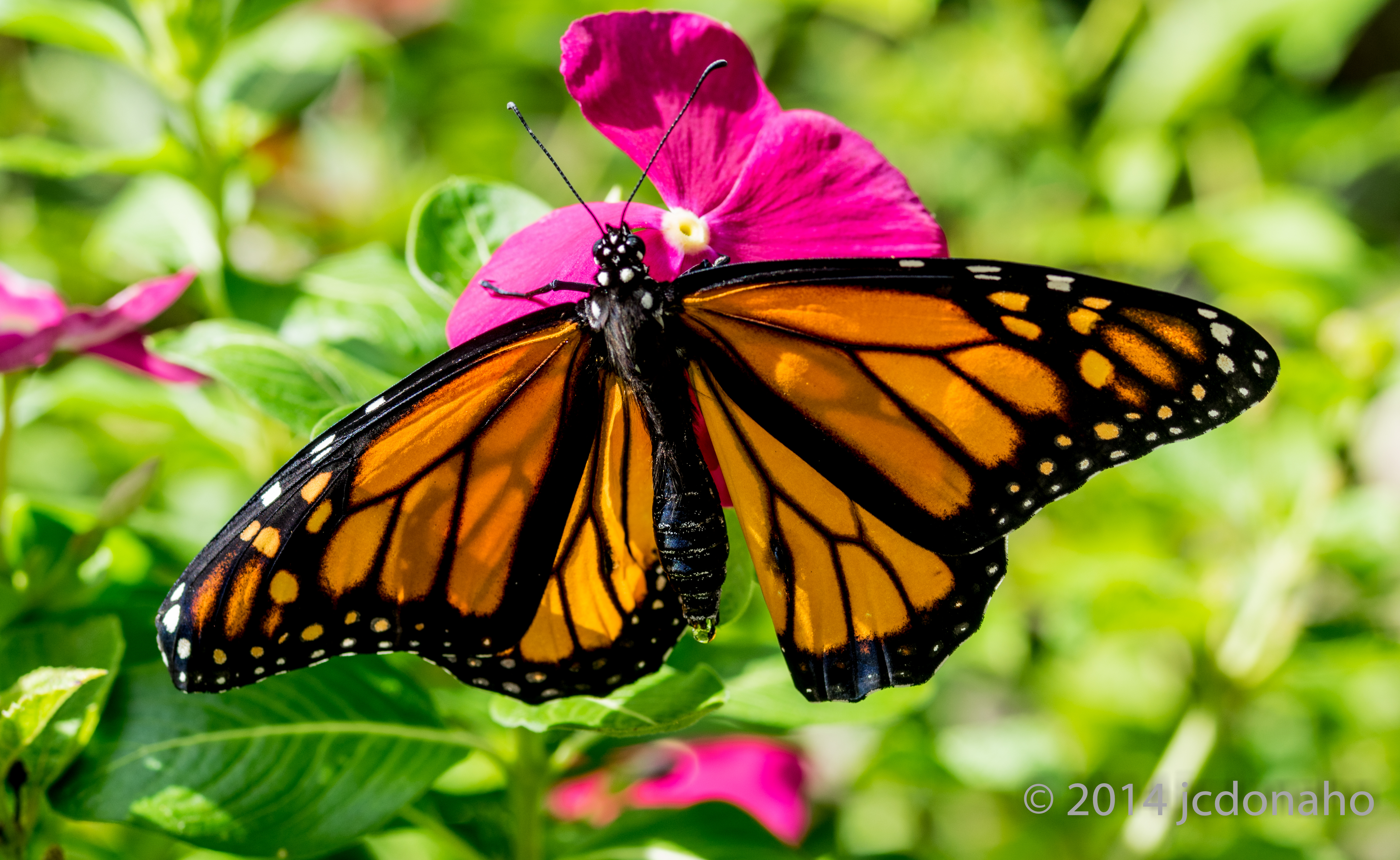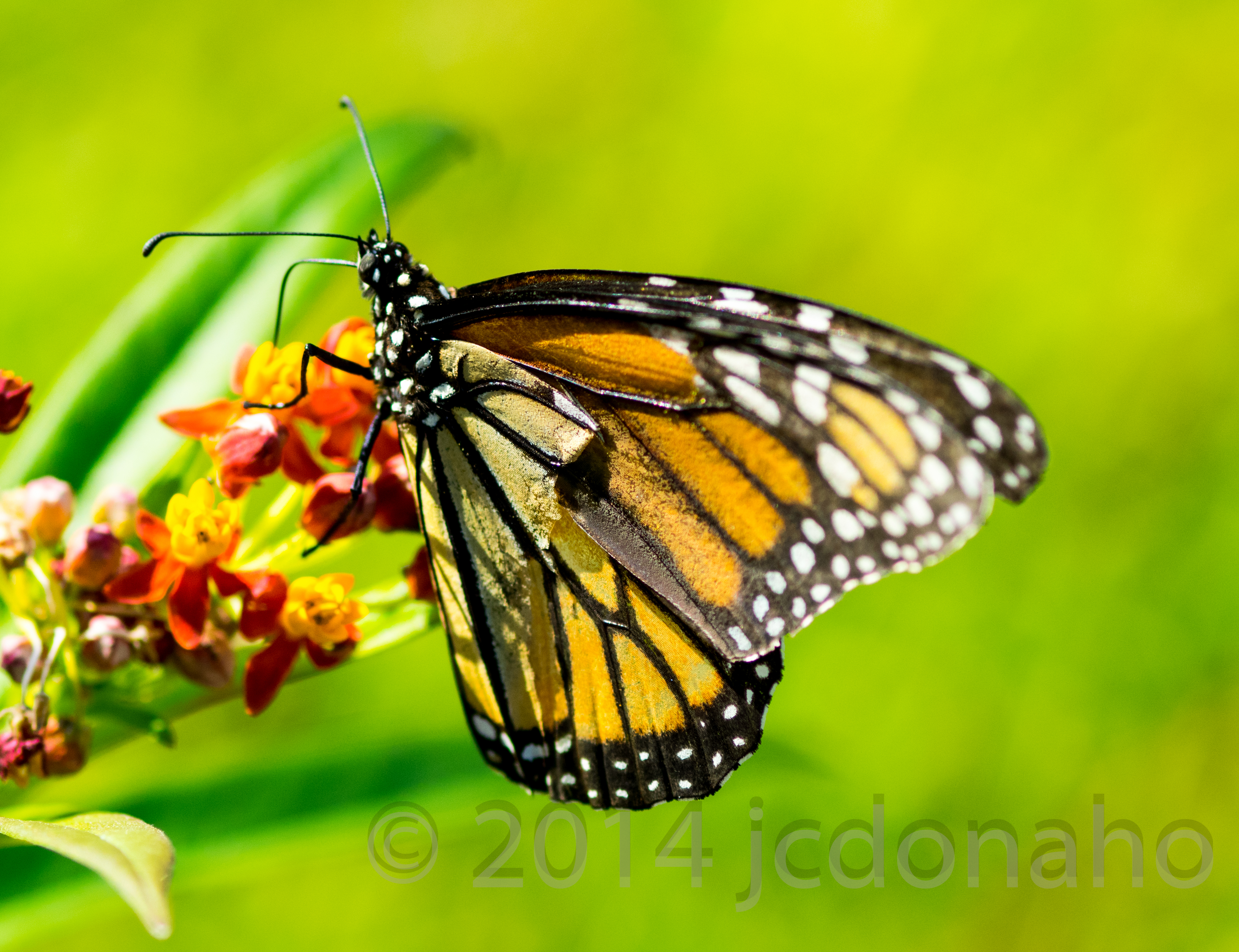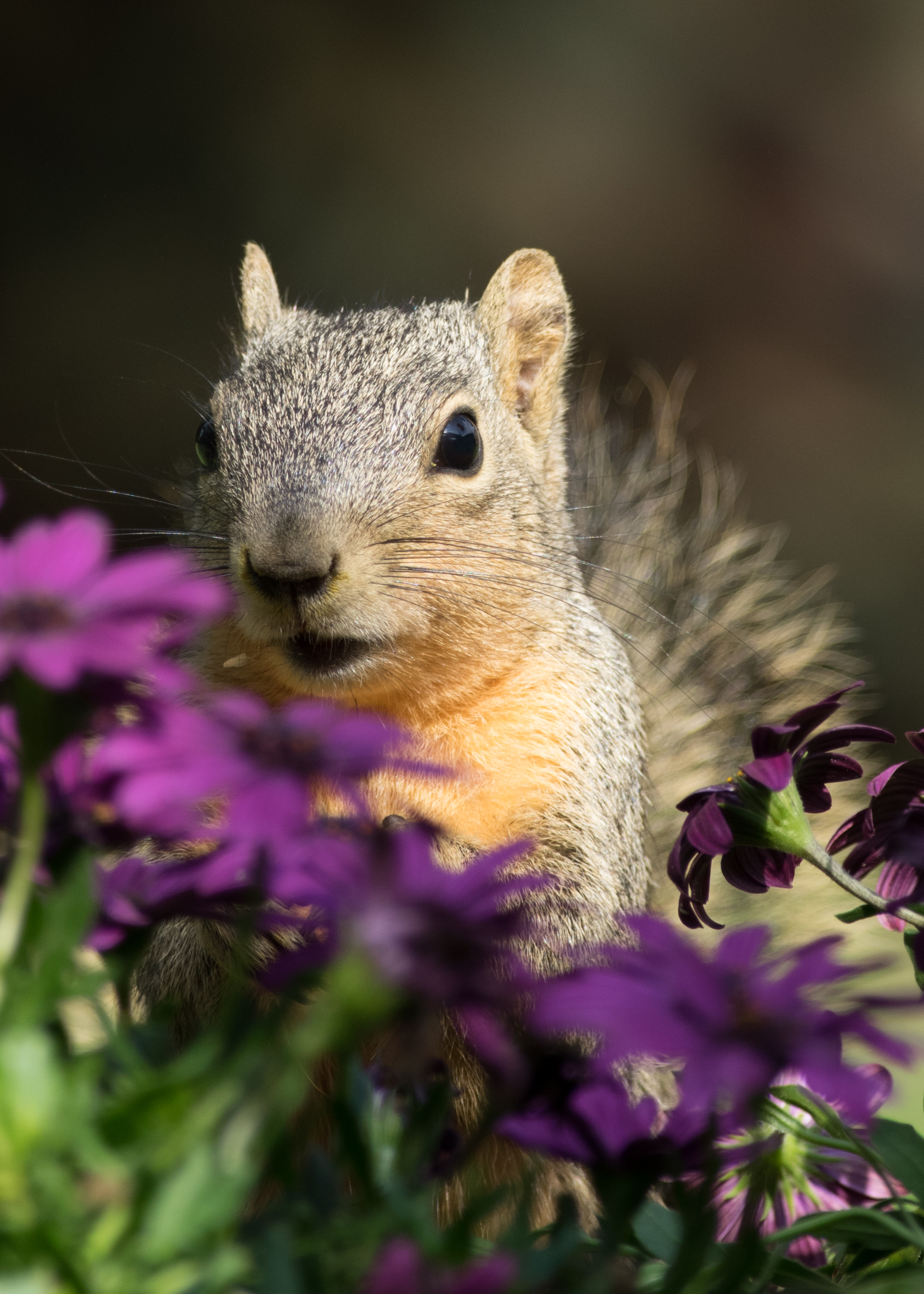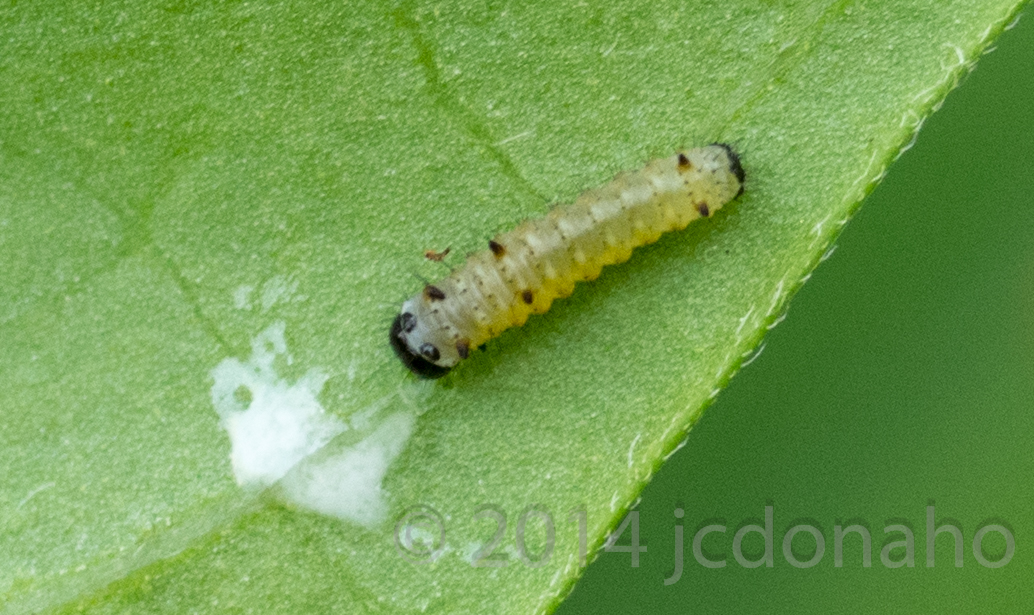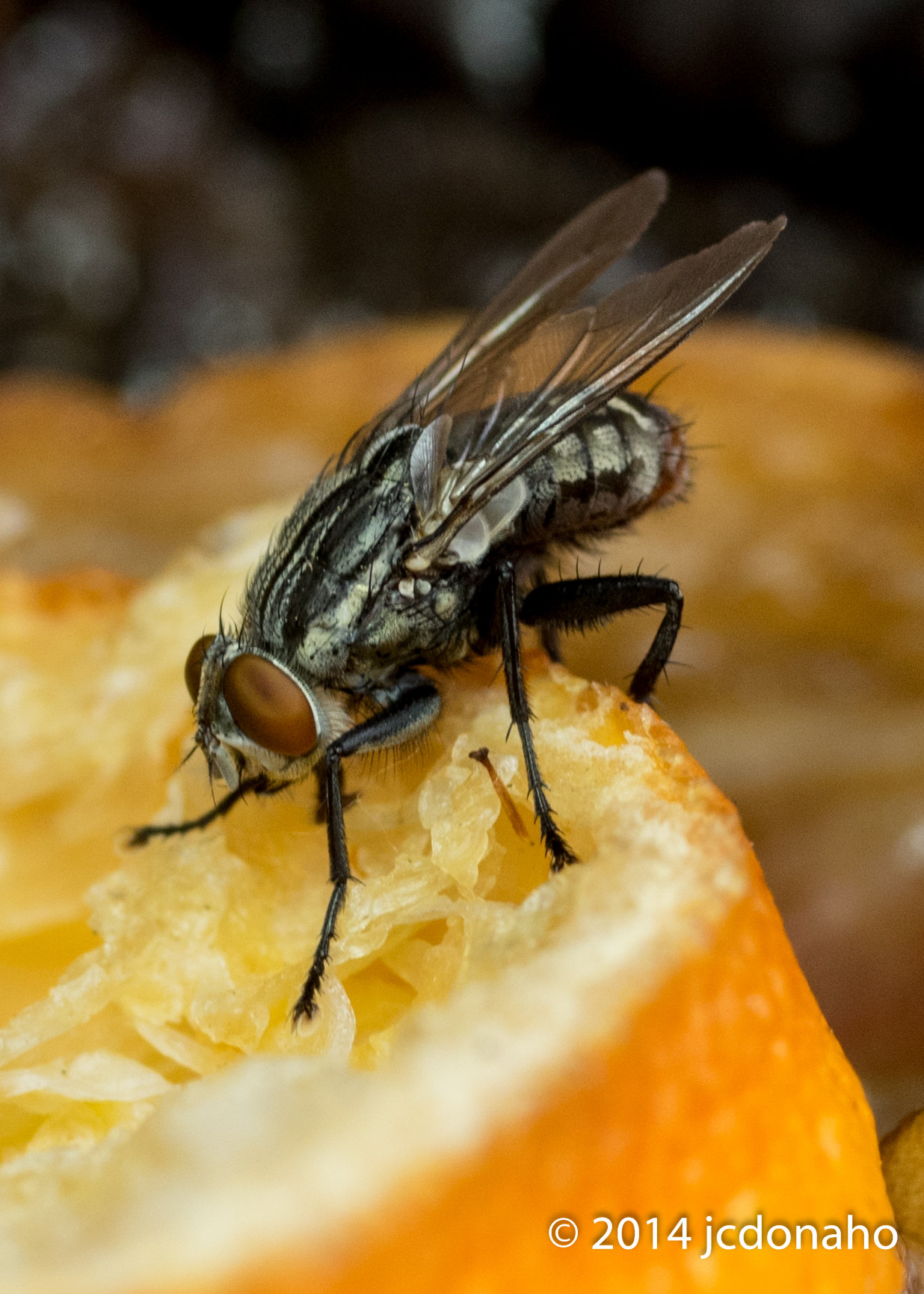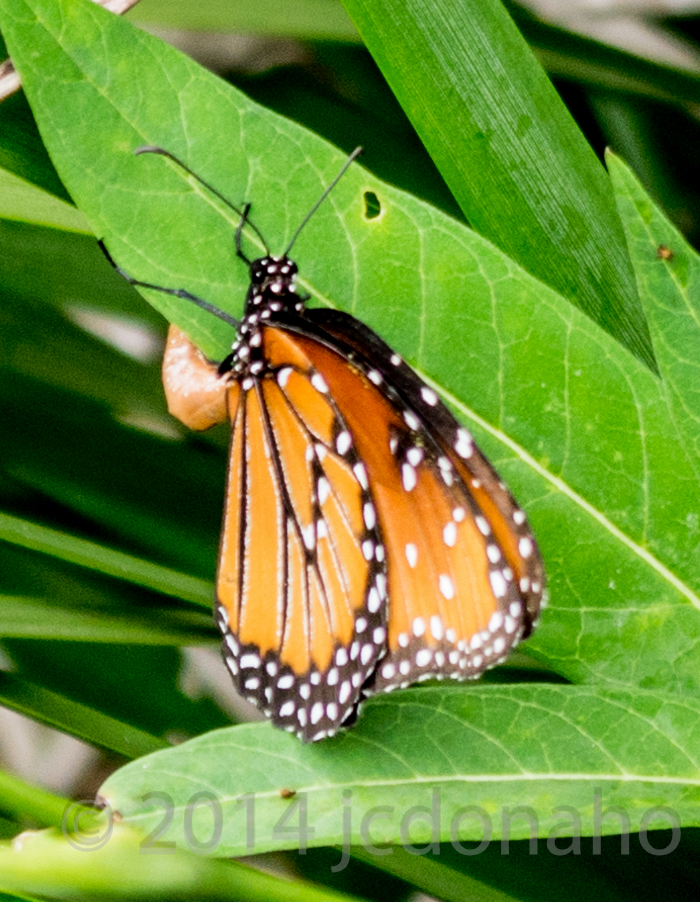
Queen Butterfly laying eggs
A couple of days ago, I happened to see a lovely orange butterfly in the front flowerbed. But it wasn’t going to the flowers. It was landing deep in the plant. I thought that was weird. Normally the butterflies are flitting from flower to flower drinking nectar. What is that butterfly doing?
The camera was handy so I took a few shots. I wanted to identify the butterfly and maybe get a good picture. I didn’t have my best butterfly lens installed on the camera at that time so the pictures are not as good as I like.
What I did see in those pictures was the butterfly laying eggs.
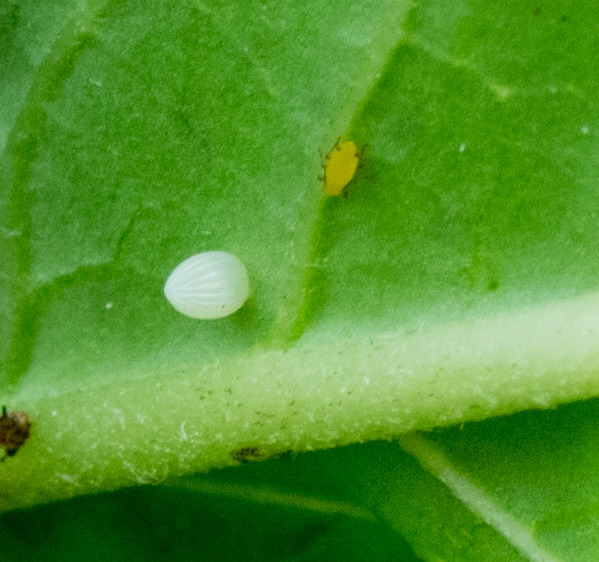
Queen Butterfly Egg (with Yellow Aphid)
That is what she was doing down inside the leaves of the plant! By the time I came back out with a good macro lens, she was gone. Carefully lifting leaves, I found several small single white eggs on the plant’s leaves. She had placed them one to a leaf.
It was time for some research on this butterfly. I am hardly an expert on insects. Each time I see something new I have to research it to understand what I have seen. That is part of the fun of doing wildlife photography. It is fun doing the research and learning about this wonderful world.
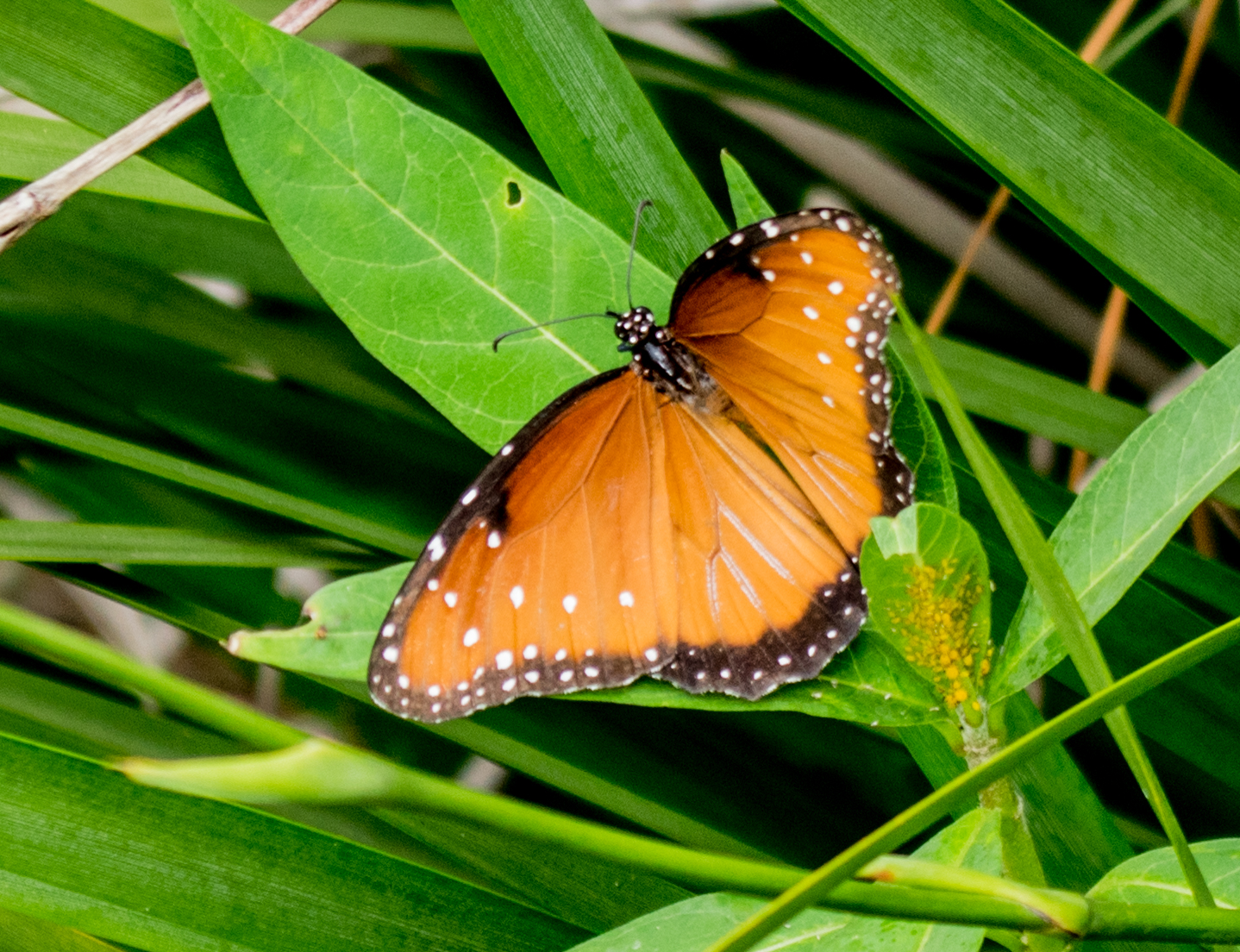
Queen Butterfly
It was a Queen Butterfly that I had seen in my garden that day. I, at first, thought she might be a Monarch. But the Queen doesn’t have those dark black wing veins like a Monarch. Monarch wings remind me of a stained glass window.
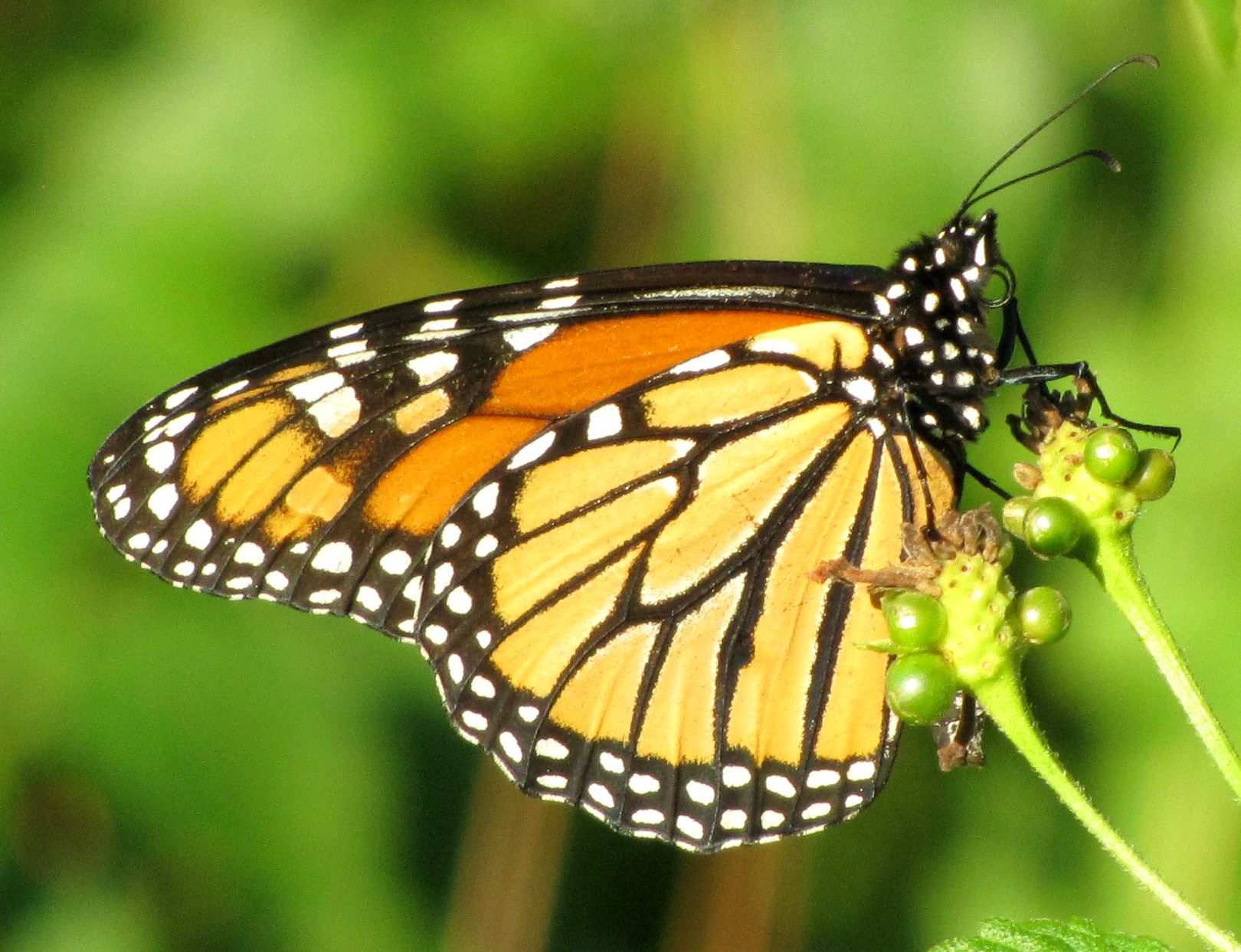
Monarch Butterfly
I found out that the Queen Butterfly is found in many parts of the world with temperate climates. The milkweed plant she used to lay her eggs was chosen as a host because the Queen butterfly caterpillars or larvae feed on milkweed. This is a common tactic with many insects to assure the young have the correct food source. If you know the food source of the caterpillar or other insect young, you can usually find those insects. I also found out in my research that the Queen does indeed lay only one egg per leaf. This makes sense since the newly hatched caterpillars will have less competition for food on their leaf when they hatch. They also tend to eat other small caterpillars!
If all goes well, the caterpillar will emerge from the egg in another day or so. It takes 3-5 days for the egg to ‘hatch’. I hope to see and photograph the new caterpillar at that time. The caterpillars go through growth stages called instars. It will be fun to watch them eat, poop and grow over the summer.
A side benefit of looking so closely under the leaves was discovering the tiny Yellow Aphids. If they become too numerous they can cause the plant to die. The only safe method I can find to rid the plant of aphids without killing the butterfly eggs too is to dab each aphid with a cotton swab soaked in rubbing alcohol. I may let nature take its course instead. I’ll find out pretty quickly if the young caterpillars will eat aphids.
Stay tuned. This is the first time I have tried following a butterfly life cycle “in the wild”. It should be fun!
